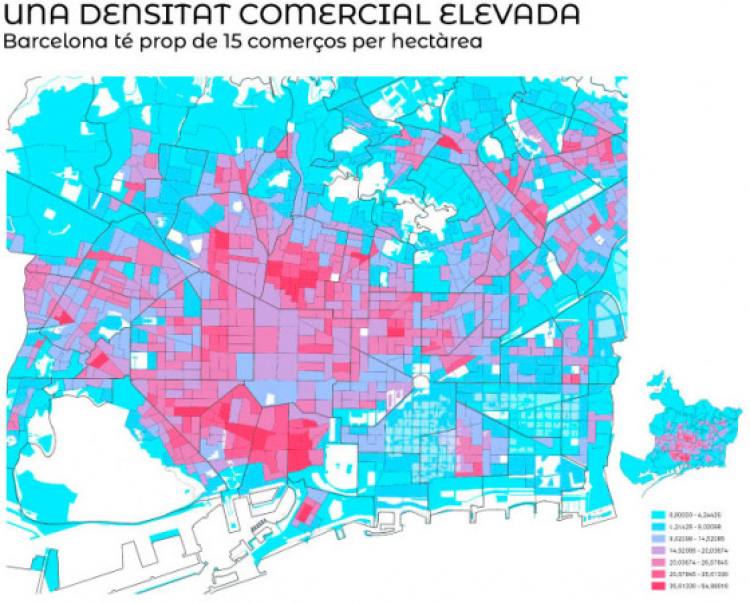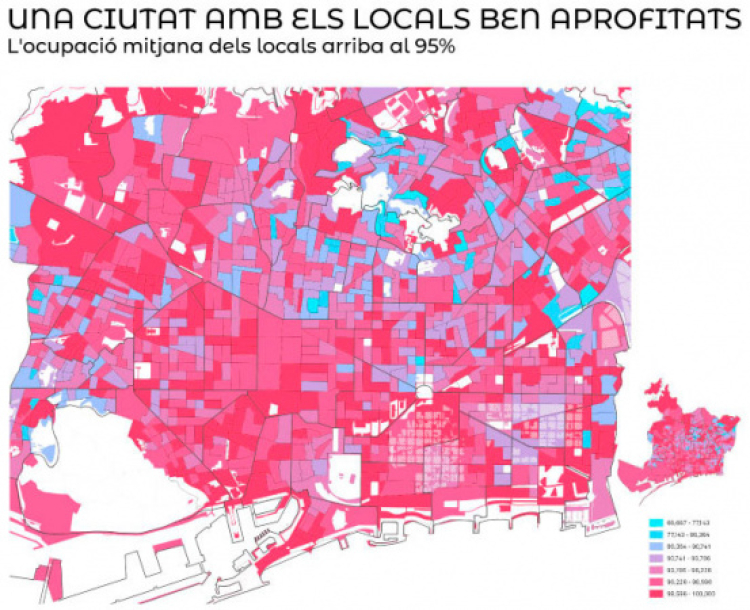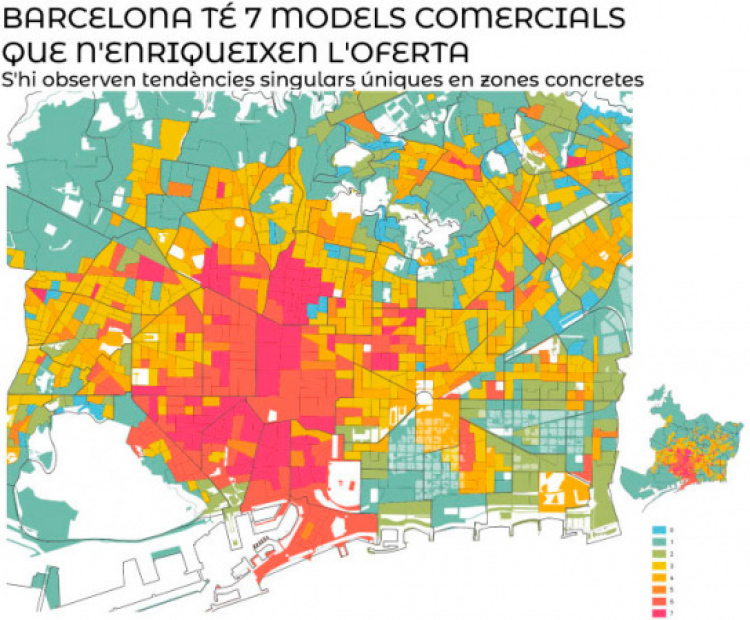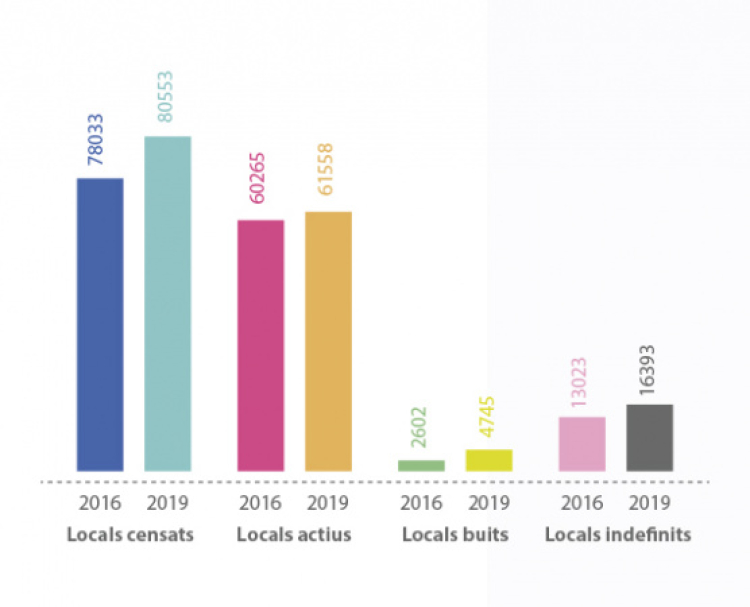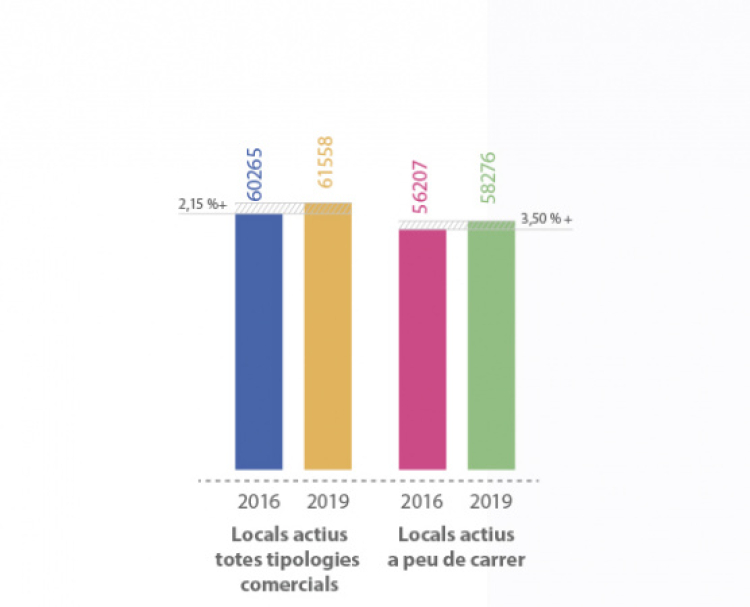2019 Commercial Census
Did you know that, at present, Barcelona has 61,558 establishments with an economic activity currently taking place on the ground floor? Of these, 55,400 are shops and commercial services, and the other 6,148 are used for administrative or industrial purposes or as facilities. This is the result of the most recent census of economic activities on ground floors regularly carried out by Barcelona City Council.
According to the report, which provides an essential tool for ascertaining the state of the city's commercial fabric, Barcelona has 2.15% more active shops and services than in 2016; the rapid changes in consumer habits are causing shops to evolve quickly; and pop-up and very specialised shops are gaining ground. Data such as these gives us a very valuable insight into Barcelona's commercial sector.
What is a census of commercial premises?
The census of commercial premises is an essential tool for diagnosis, systematisation of indicators, decision-making and the assessment of public policies in this sector. It enables us, among other things, to quantify active ground-floor shops, classify them by the type of service provided to the public and see their evolution district by district. In addition, the census update campaigns - which in Barcelona's case have been carried out in 2014, 2016 and 2019 - always include a report with an analysis of the information collected and a critical assessment.
Why is it important to do this?
In a city such as Barcelona, commerce is the great engine that drives the economy, but it is also a key aspect that helps define the physiognomy of neighbourhoods, as citizens’ quality of life depends directly on the configuration of the commercial fabric. This is why Barcelona City Council regularly conducts a census of economic activities on ground floors in order to ascertain the state of the city’s commercial fabric from a quantitative point of view.
Main results
-
The results of the analysis of the data collected and a comparison with the previous campaign (2016) suggest that both commercial formats (at street level and in markets, shopping centres and arcades) and distribution by sector have remained stable in a context in which the number of active establishments has increased to 61,558. Commercial activity has also risen in the majority of districts.
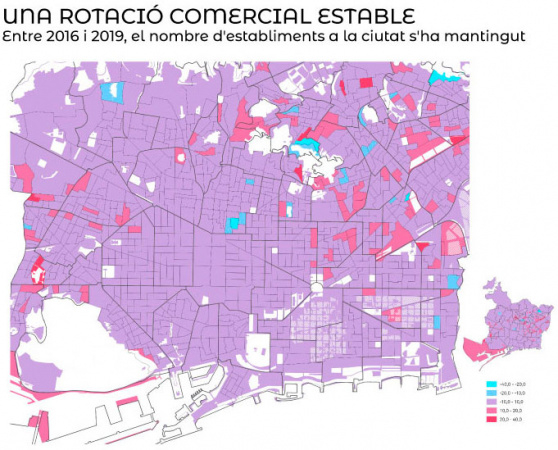
-
This year there are around 12,933 more active shops and services, an increase of 2.15% compared to 2016. This upward trend must be interpreted in the context of the improvements made to the 2019 census to cover the entire city, as well as the more accurate fieldwork carried out. At present, only 4% of commercial premises are empty.
-
With more than 60,000 active commercial premises and almost four establishments per 100 inhabitants, Barcelona's commercial fabric guarantees the necessary supply for its citizens. Thus, one out of every three establishments provides miscellaneous services (36.2%), while one out of every five are non-food establishments (22.8%) or restaurant services (18.2%). About one out of every ten shops is a food shop (12%). This structure has remained stable since 2016.
-
In the retail sector, almost 60% of establishments (12,770, to be precise) are shops that sell everyday food items or personal items, with percentages of 35.7% and 22.3% respectively. Approximately a further 20% is composed of everyday non-food commercial activities (2,692 establishments) and household items (2,421 establishments). The remaining categories, such as leisure and culture and the automotive industry, account for lower percentages. There is another category of retail shops composed of miscellaneous activities which are therefore hard to group together in a homogeneous way, such as department stores, hypermarkets, machinery, optics and photography, and souvenir shops and bazaars.
-
A diverse group accounts for almost 40% of active service establishments. This includes car parks, transport services, storage, telecommunications, telephone booth centres, services for businesses and offices, travel agencies, hairdressers and beauty salons, dry cleaners and shops providing alteration services, vets and pets and social services. The restaurant industry is also significant, as the restaurants, bars and hotel services account for 33.4%.
Services relating to education, health, culture and leisure account for approximately 15% of the remainder; and financial and real estate services (with 3.72% and 2.84% respectively) account for almost a further 6.5%. Finally, the remaining 5% is composed of repair and maintenance, cleaning and production establishments.
Co-financed by:

